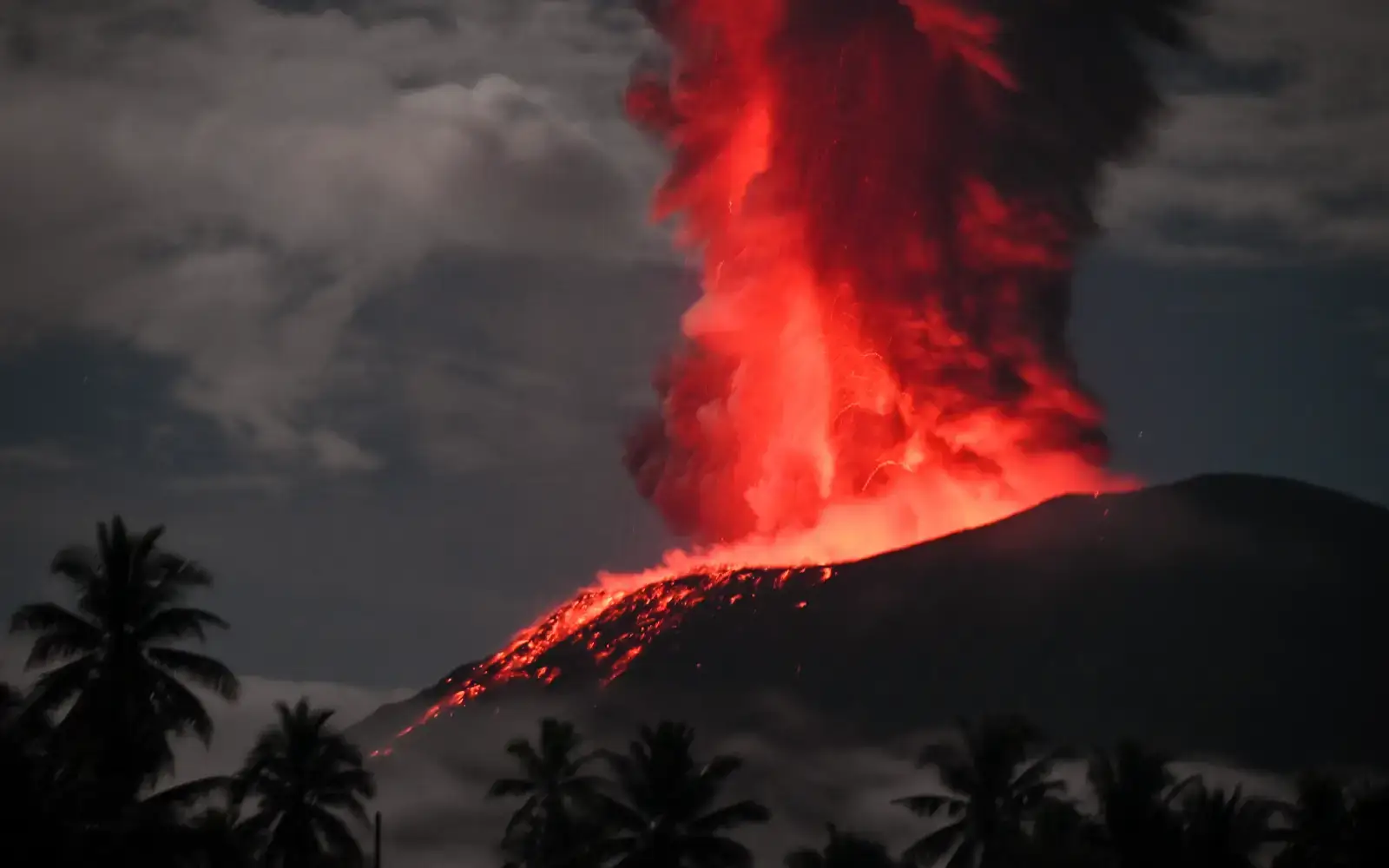Indonesia’s Mount Ibu continues to erupt, raising concerns about prolonged volcanic activity and its environmental and societal impact.
Key Points at a Glance
- Mount Ibu, located on Halmahera Island in Indonesia, has been erupting continuously for a month.
- Over 1,000 eruptions have been recorded within this period, showcasing the volcano’s extraordinary activity.
- The eruptions have resulted in ash plumes rising over 2 kilometers into the sky.
- Nearby communities face health risks and environmental challenges due to ashfall and gas emissions.
- The eruptions highlight Indonesia’s status as part of the Pacific Ring of Fire, with over 120 active volcanoes.
Mount Ibu, a stratovolcano situated on Indonesia’s Halmahera Island, has entered its second month of sustained eruptions, creating spectacular but dangerous ash plumes. Reports from local authorities indicate that ash clouds have reached heights exceeding 2 kilometers (6,500 feet), spreading particulate matter over surrounding areas. The continuous eruptions, numbering over 1,000 in the past month, have prompted warnings for aviation and advisories for nearby residents.
“The volcanic activity at Mount Ibu is a stark reminder of Indonesia’s dynamic geological nature,” said Dr. Anwar Halim, a volcanologist with Indonesia’s Geological Agency. “Prolonged eruptions like this are not uncommon in our region, but they require constant monitoring to mitigate risks.”
Residents living near Mount Ibu are grappling with significant challenges, including air quality deterioration due to fine volcanic ash. Authorities have distributed masks to minimize respiratory issues and advised against outdoor activities during heavy ashfall. Farmlands have also been affected, with ash covering crops and potentially harming agricultural yields.
“It’s difficult to breathe, and our crops are suffering,” said Lina Arif, a farmer from a village near the volcano. “We’re worried about how long this will last.”
Mount Ibu is part of the Pacific Ring of Fire, a horseshoe-shaped zone known for its high seismic activity and frequent volcanic eruptions. Indonesia’s location on this tectonic hotspot makes it home to more than 120 active volcanoes, with Mount Ibu among the most active in recent years.
The sustained eruptions contribute to global volcanic gas emissions, including sulfur dioxide, which can affect atmospheric conditions. While the current activity level poses localized threats, researchers are also monitoring for any signs of escalation that could lead to a larger eruption.
Indonesia’s National Disaster Mitigation Agency (BNPB) has ramped up efforts to monitor Mount Ibu and coordinate with local governments to implement safety measures. Evacuation plans are in place, though no mass evacuations have been necessary so far. The BNPB continues to urge caution and preparedness among residents.
Dr. Halim emphasizes the importance of public education about volcanic risks. “Understanding the hazards and knowing what to do during eruptions can save lives,” he said. “We encourage everyone to stay informed and follow official advisories.”
Volcanic activity has long shaped Indonesia’s landscapes and ecosystems, creating fertile soils that support agriculture while posing periodic risks to communities. Mount Ibu’s recent activity underscores the delicate balance between harnessing the benefits of living near volcanoes and managing their hazards.
As Mount Ibu’s eruptions continue, scientists and local authorities remain vigilant, working to protect lives and livelihoods in one of the most volcanically active regions on Earth.
